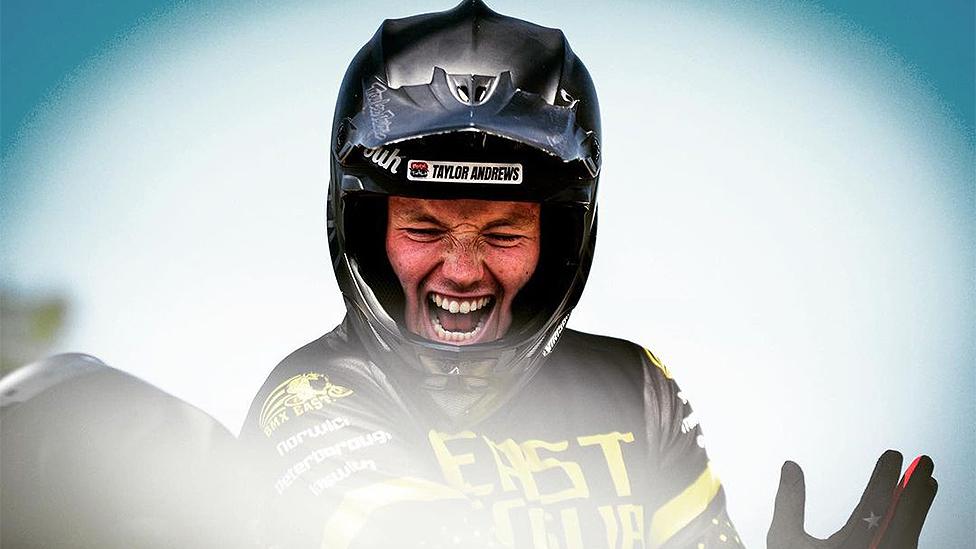Dressage: How to make a horse dance
- Published

Lewis Carrier says dressage isn't something "you can just do"
For some, Olympic dressage is that sport where an athlete sits on a horse and makes it dance. For others, it's a lifetime of training and dedication.
That's the case for Charlotte Dujardin - this week she became Great Britain's most decorated female Olympian, winning bronze in the individual dressage event at Tokyo 2020.
But what does it take to win an Olympic dressage medal? And more importantly... how do you train a horse to dance?
According to international dressage rider Lewis Carrier, "it's not something you can just do".
The 24-year-old has been riding horses since he was six and is hoping to compete for Team GB at the 2024 games in Paris.
"Training a horse to do that takes years of experience," he tells Radio 1 Newsbeat.
"It's like learning to dance. It's technique. It's teaching a horse how to move a certain way and how to use their body in a certain way."
It's one of the reasons the athletes competing in dressage can be older than those competing in other non-equestrian sports.
Like Great Britain's oldest Olympian at the games Carl Hester, who, aged 52, is part of the medal-winning dressage team.
His first Olympics was way back in 1992 in Barcelona.
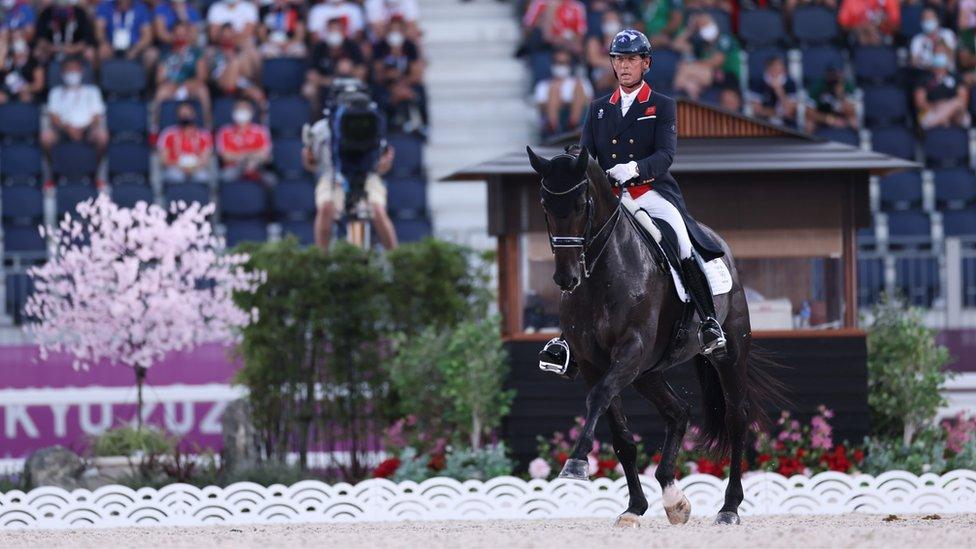
Experience pays - Carl Hester's the oldest Olympian at Tokyo 2020 and won a bronze this week
As well as needing years of experience, dressage athletes can also benefit from a bit of Star Wars force, Lewis says.
He likes to imagine dressage like a Jedi power - an invisible force that lets those trained in it control things with their mind.
"It's so much about feel. It's so hard as a trainer to teach someone, it's just something you feel one day and you have it. You have the feel," he says.
Every movement in dressage is triggered by an aide from the rider, Lewis adds.
"These horses have trained with these riders for such a long time. They know exactly what the rider is asking for when they do it. They have to be moving like Olympians. Nothing can look forced, it has to look harmonious between horse and rider."

The rules
Dressage at the Olympics is made up of three tests: qualifying, team and individual
At an Olympic Games, each nation can put forward three teams of three horse and rider combinations
Each rider and horse combination takes it in turn to perform a range of movements, scored by seven judges
Everyone competes in the qualifying round. The top eight teams (each including three riders) make it to the team final
The team final is decided by adding all three scores - giving the top three teams gold, silver and bronze
The top 18 riders from the team final then compete in the individual final

Top athletes like Charlotte Dujardin train with several horses, so animals are ready to take over if needed.
Horses can start competing aged eight and normally carry on until they're 19 or 20, Lewis says.
So do these hard-working horses get their own medals?
Not exactly - but Lewis says if they win they celebrate with lots of sugar cubes and carrots.
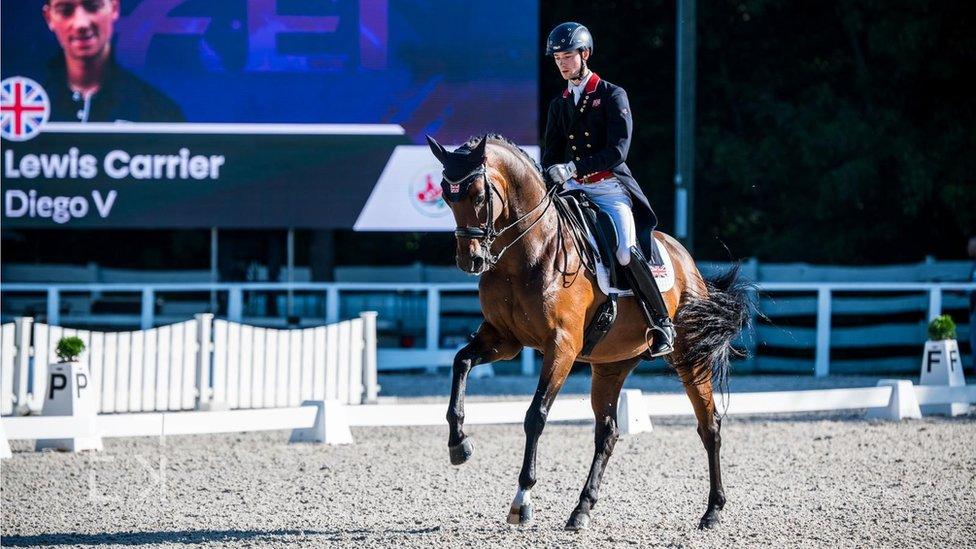
Lewis says training a horse to dance is a technique
"It's hard to explain to an animal how good they have done," he says.
"[But] these horses know the riders so well and they know when they've done a good job."
A rule states that horses have to be part-owned by someone from the nation they're representing, but according to Lewis the blood lines are mostly Dutch and German-bred - as that's where dressage is so big.

Lottie Fry (right) won a bronze medal with Charlotte Dujardin and Carl Hester
One of the stand out Team GB stars in dressage at this games has been 25-year-old Lottie Fry, who is technically still a junior.
She was the youngest medal-winning rider in the team final - taking home bronze alongside Carl Hester and Charlotte Dujardin - which Lewis says is "massive."
"For her to be at an Olympic Games at 25 years old, halfway around the world, and to pull off three incredible tests is absolutely huge. You have to have so much calm about you to ride a test like that. It's really impressive."

Follow Newsbeat on Instagram, external, Facebook, external, Twitter, external and YouTube, external.
Listen to Newsbeat live at 12:45 and 17:45 weekdays - or listen back here.
- Attribution
- Published28 July 2021
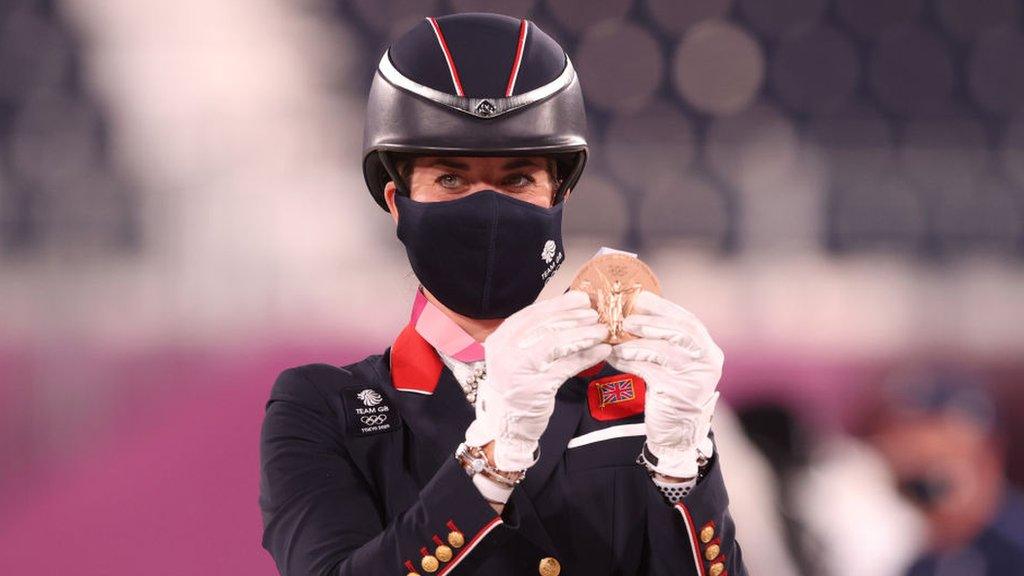
- Published29 July 2021
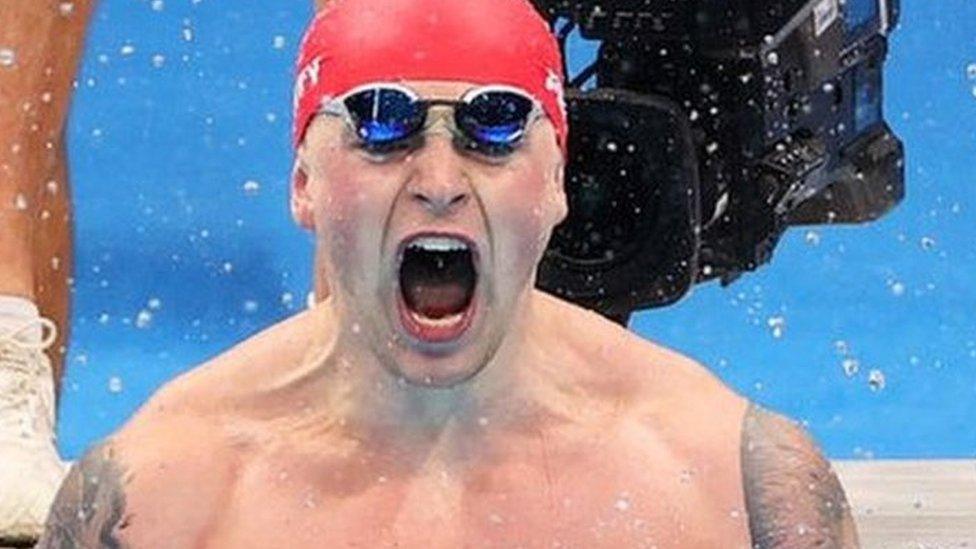
- Published27 July 2021

- Published22 July 2021
